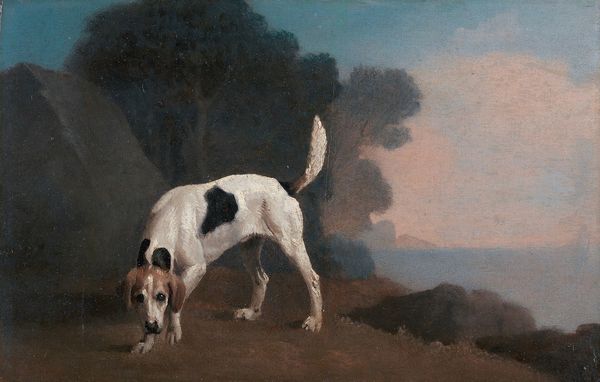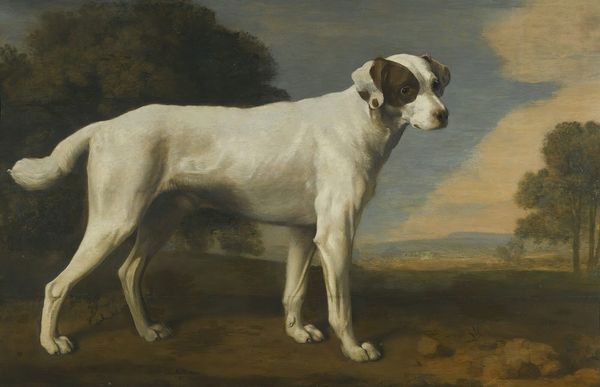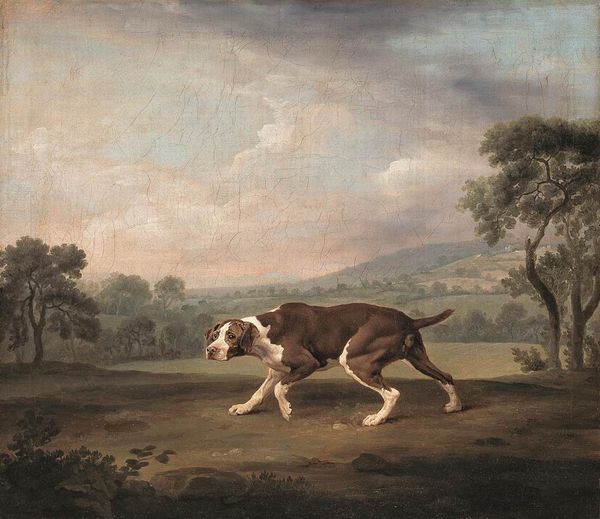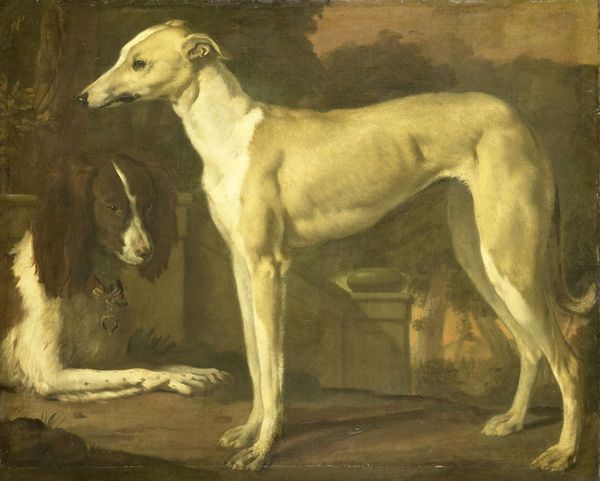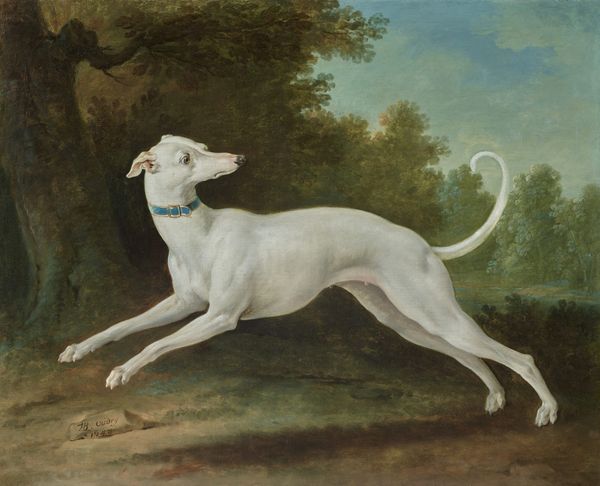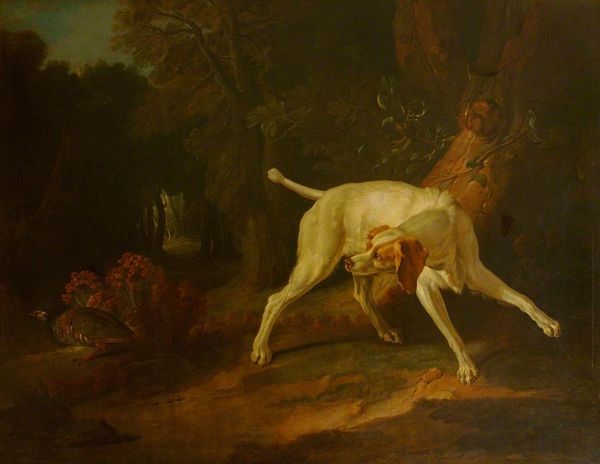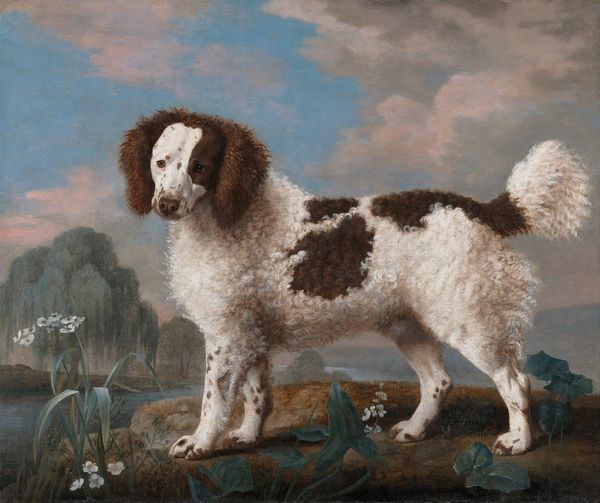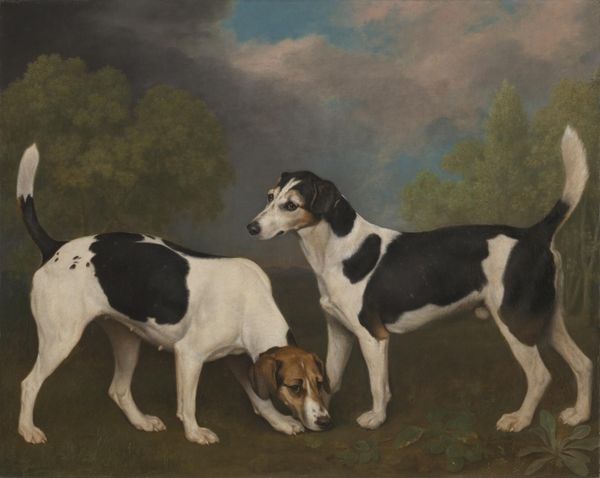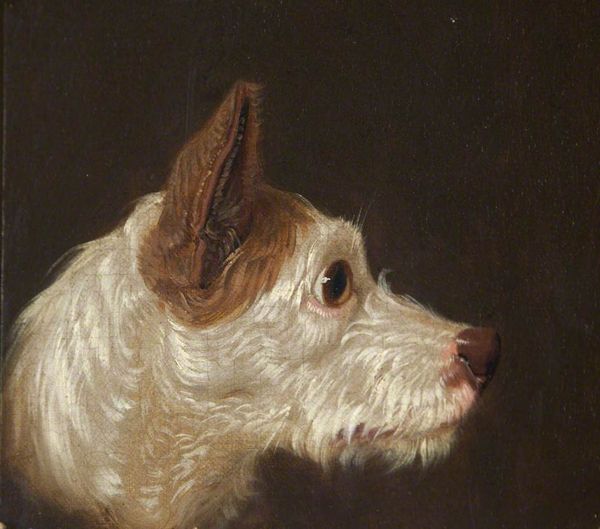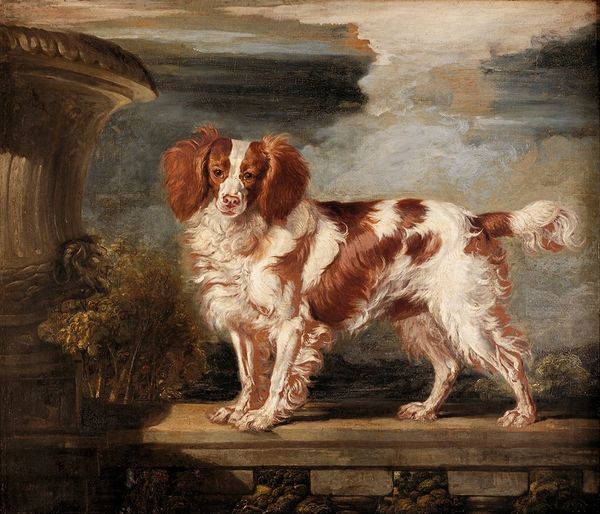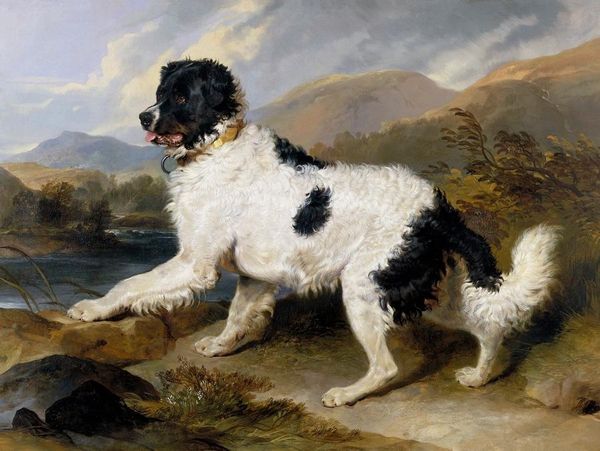
Copyright: Public Domain: Artvee
George Stubbs painted this foxhound in oil paint, probably sometime in the late 1700s in England. Stubbs was known for his paintings of animals, particularly horses, and he often depicted them with anatomical accuracy, partly arising from his connections with medical institutions. In Britain at the time, the rural aristocracy was obsessed with hunting. Fox hunting was a popular activity. This painting shows a foxhound in a natural setting, perhaps waiting for the hunt to begin. But this isn’t just a representation of a dog. It’s also about social status. Owning and breeding foxhounds was a sign of wealth and power, and paintings like this one were often commissioned by wealthy landowners to celebrate their animals. Stubbs’ paintings elevated these animals to the level of portraiture usually reserved for humans. To understand this painting better, we might look at the artist’s other works, or at the social history of hunting in England, using sources like estate records and sporting magazines. This shows us how art is tied to its social context, reflecting the values and interests of the society that produced it.
Comments
No comments
Be the first to comment and join the conversation on the ultimate creative platform.
